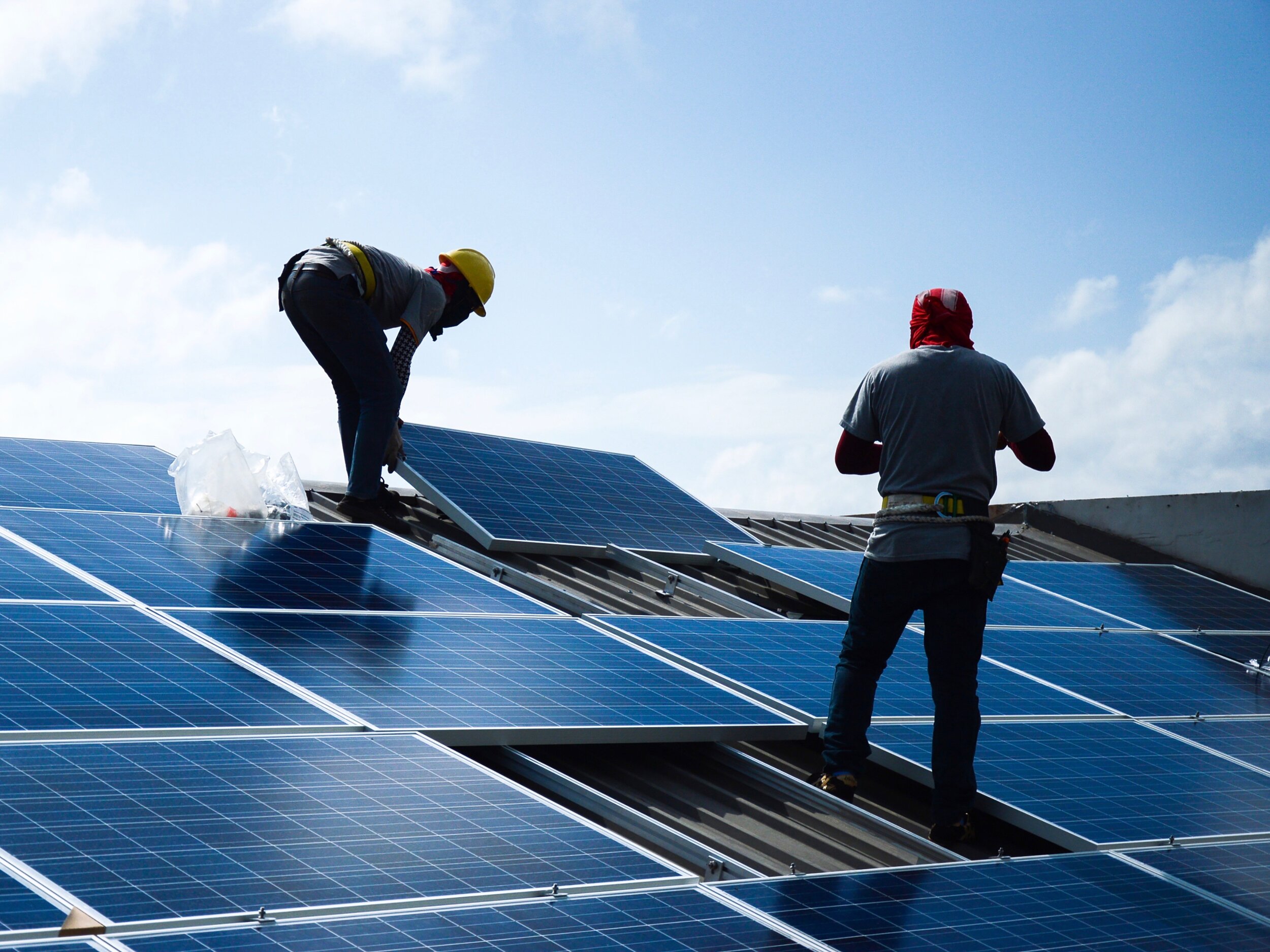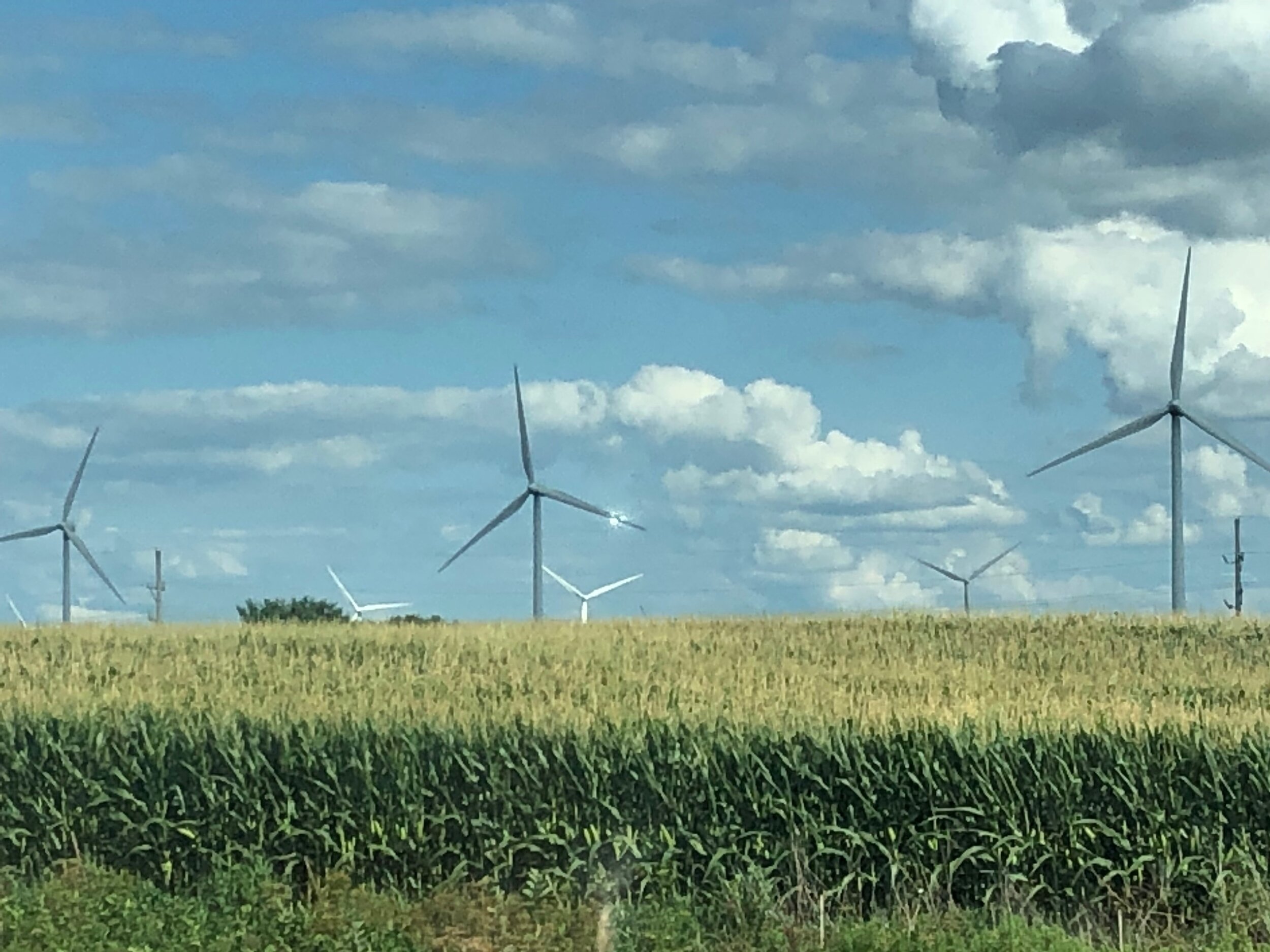Clean energy can renew economy
Growth sector hard hit by pandemic but poised for rebound; advocates urge policy support like Clean Energy Jobs Act
Workers install rooftop solar panels. The clean-energy industry has been hard hit in the economic impact stemming from the COVID-19 pandemic, but is poised to rebound. (Shutterstock)
By Ted Cox
Renewable energy might be the key to renewing the economy as it recovers from the COVID-19 pandemic.
A new report called “Clean Jobs Midwest 2020” finds that the clean-energy economy grew for the fifth straight year in the Midwest, but has been severely impacted by the economic decline brought on by efforts to mitigate the spread of the coronavirus.
According to the report, almost three-quarters of a million people, 744,000, were employed in what’s considered clean-energy industries at the end of last year across 12 Midwest states, led by more than 125,000 each in Illinois and Michigan. According to Ian Adams, managing director of the Clean Energy Trust, the sector grew 5 percent since 2017, four times faster than the rest of the economy even in the relative boom ahead of the COVID collapse.
“Unfortunately, with the pandemic there have been significant losses throughout the region,” Adams said on a media conference call Thursday with the release of the new report. An estimated 131,000 idled workers in the industry have filed for unemployment this year, “which wipes out years of job growth.”
That included 31,000 in Michigan and another 17,500 in Illinois, and the losses persisted through May, when both states lost 1,000 workers in the clean-energy sector.
Christopher Gersch, chief executive officer of Verde Energy Solutions, based in Chicago, said his company was indicative. It had 56 employees and four crews installing solar panels before the COVID collapse, but has had to cut down by a third to 38 employees, with two full-time crews.
“It’s been a really trying time,” Gersch said.
Gersch and others, however, made the case that the clean-energy sector’s already proven ability to grow quickly makes it poised for a rebound and to lead the post-COVID recovery.
“We’re looking for policy and legislation that can help re-create the momentum we had the last several years,” Gersch said. “Renewable is good for our community, for our environment, and for the growing economy.”
Micaela Preskill, Midwest advocate for the national, nonpartisan business group E2, pointed to how $90 billion in funding allocated in the midst of the Great Recession in 2008 spurred 100,000 jobs nationally and led to 1 million homes being weatherized. In fact, energy efficiency remains the largest of five sectors that make up what’s considered the clean-energy economy, followed by renewables like wind and solar, advanced transportation including electric cars, as at the planned Rivian factory in Bloomington, grid and storage, and clean fields.
Of the 17,500 Illinois jobs lost in clean energy in the pandemic, an estimated 12,400 were in energy efficiency, 2,500 in renewables, and 1,400 in advanced transportation.
Preskill cited the Future Energy Jobs Act in Illinois as a particularly effective program, saying, “The state added more clean-energy jobs than any other Midwestern state last year.”
Renewable energy is a growth industry across the Midwest and Illinois, as seen in the continuing expansion of wind farms. (One Illinois/Ted Cox)
Gersch called FEJA a “very successful program which has allowed a tremendous amount of solar-development job creation,” but he said it required new funding in its Adjustable Block Program. “Really, we’re up against a cliff as far as funding,” he added.
But Gersch also said the Clean Energy Jobs Act, an even more ambitious follow-up bill still pending in the General Assembly, could also supply some momentum, especially in the energy credits that spur the shift from fossil fuels to clean energy, as well as with public schools and universities.
The sector is poised for renewed exponential growth, if it can just get the initial impetus, a point state Rep. Ann Williams of Chicago, lead sponsor of the bill, also made recently.
“We know clean-energy investment and stimulus focused on clean energy can help lead us back to a strong economy,” Preskill said. “We know that we can put the most people back to work in the most occupations in the least amount of time.
“We can do this,” she added. “We can put Midwesterners back on the job today and we can build a cleaner economy going forward. We need to see leadership in Washington, D.C., and in our state capitals.”
“The industry is really well-positioned to be an engine of growth that drives the economic recovery,” Adams said. While Chicago and Detroit are major centers of the movement, he emphasized that it’s largely driven by small businesses jumping into the growth industry, saying, “These jobs are really distributed throughout the region in every corner of every state in the Midwest,” as anyone already knows who’s seen the expansion of wind farms across Illinois.
Even in the politically divided Congress, where the HEROES Act potentially providing $3 trillion in coronavirus relief has passed the House but has stalled in the Senate, Preskill was encouraged in that both bodies have recently addressed energy jobs in committee hearings leading up to the next stimulus package.
“We hope to see the next iteration of COVID-related stimulus from Congress next week,” she said.


